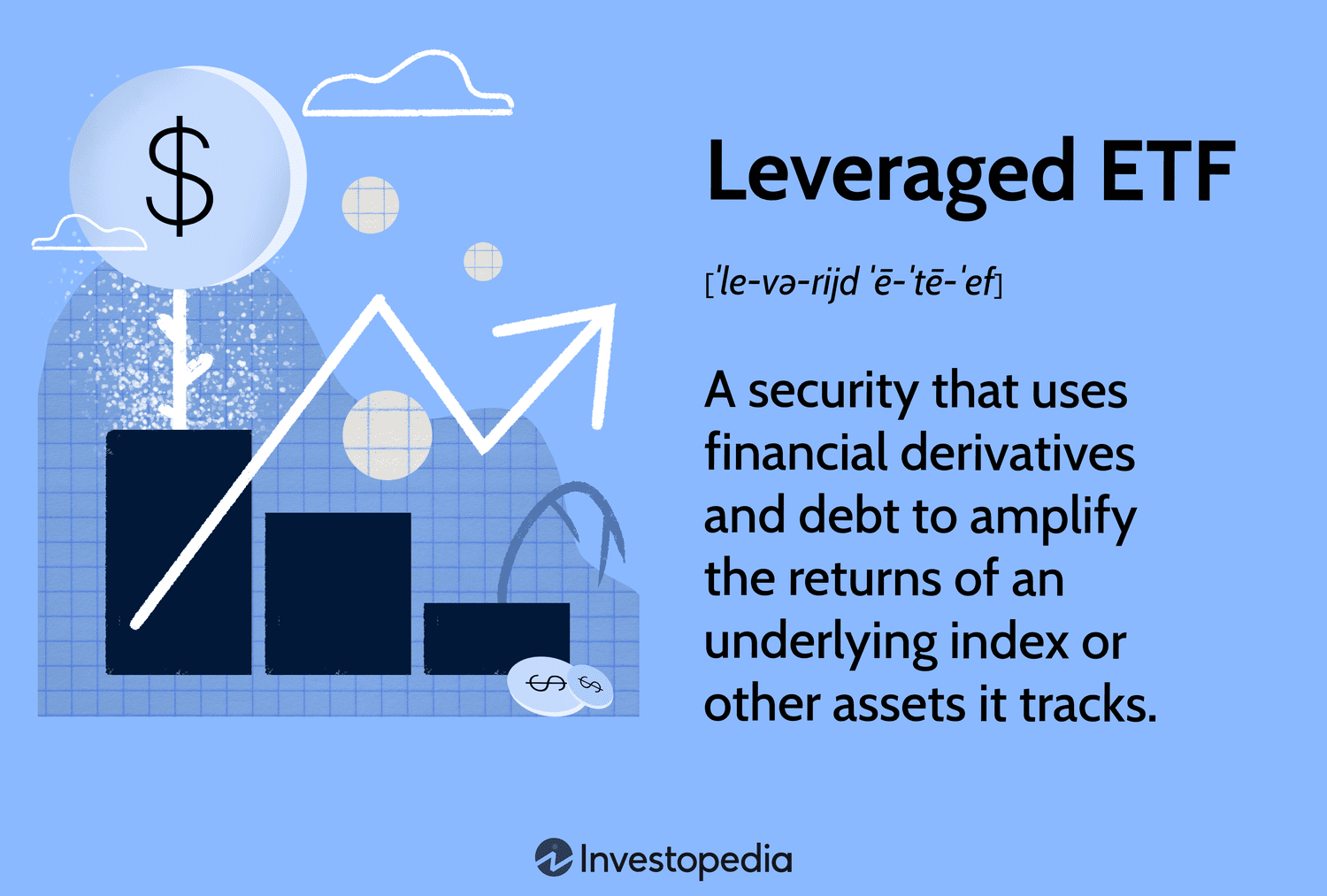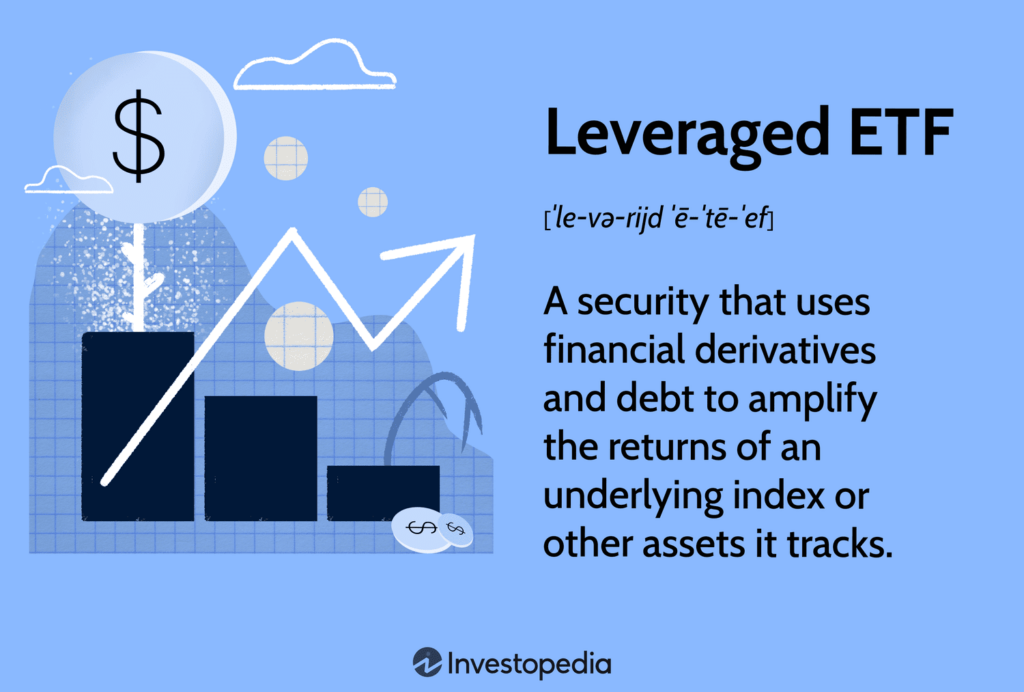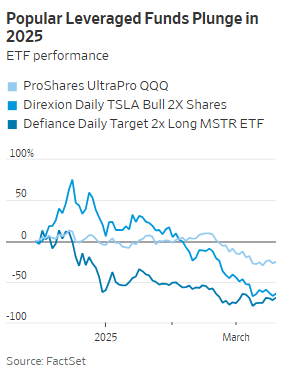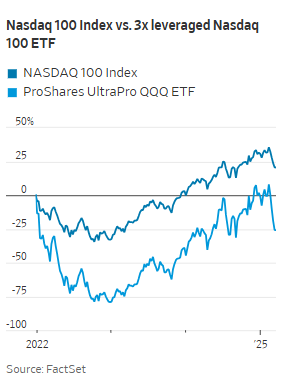

Investors who loaded up on funds that double down on their favorite stocks were rewarded with record highs. Now they are facing the downside.
Several popular leveraged exchange-traded funds, which use borrowed money to amplify their bets on one or more asset, have erased most of their value in a matter of weeks. Among the worst performers: A fund that offers investors twice the exposure to shares of MicroStrategy , the software company-turned-bitcoin collector, has plunged 83% since touching its November high. Another ETF, which offers similar leverage on Tesla, is down 80%.
Leveraged ETFs emerged last year as one of Wall Street’s favorite roller coasters, as investors sought out ways to take bigger risks during the stock market’s rally and money-management firms launched a bunch of new funds that capitalized on this demand. Assets under management in leveraged ETFs jumped by 51%, to $134 billion, in the 12 months ending Jan. 31, according to Morningstar.
Funds that offer leveraged exposure to broad stock indexes have been offered in the U.S. for more than a decade. But leveraged single-stock ETFs, like those linked to MicroStrategy and Tesla, were first approved by regulators in 2022.
The funds are designed for short-term traders and shouldn’t be held for long periods, investment firms said.

Take the largest leveraged fund, the $22 billion ProShares UltraPro QQQ, for example. The fund aims to generate three times the daily performance of the Nasdaq-100 index, up or down. On Wednesday, the Nasdaq-100 rose 1.3% and the leveraged fund rose 3.9%, approximately three times as much, as intended.
But over a period longer than one day, returns begin to differ substantially. The Nasdaq-100 index has risen nearly 20% since the end of 2021, while the fund that offers leveraged daily exposure is down more than 25%. That is because it still hasn’t recovered from steep losses suffered in 2022, when a Nasdaq bear market sent the leveraged fund down more than 80%.
The relatively new class of leveraged single-stock ETFs has taken investors on an even wilder ride. The three largest single-stock funds give holders leveraged exposure to Nvidia, Tesla and MicroStrategy—a trio of stocks popular with the day-trading crowd.
The MicroStrategy funds offer the starkest example of the speed with which fortunes can be minted and then lost with single-stock funds. Defiance ETFs and Tuttle Capital Management launched competing products in August and September, and both became overnight hits, collecting billions in investor cash as they posted eye-popping gains.
Early investors watched the price of the funds rise by more than 10-fold from September to November, the period in which MicroStrategy shares also soared.
The funds have crashed since, and while they are still up since inception, the average investor is down a lot. The two funds have saddled investors with an estimated $1.7 billion in losses since launching seven months ago, according to a Morningstar analysis that takes into account the timing of inflows.
The biggest MicroStrategy fund, known by ticker MSTU, has posted almost $500 million of inflows year-to-date, including $312 million over the past month, according to FactSet.



















